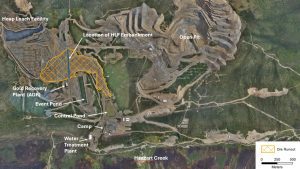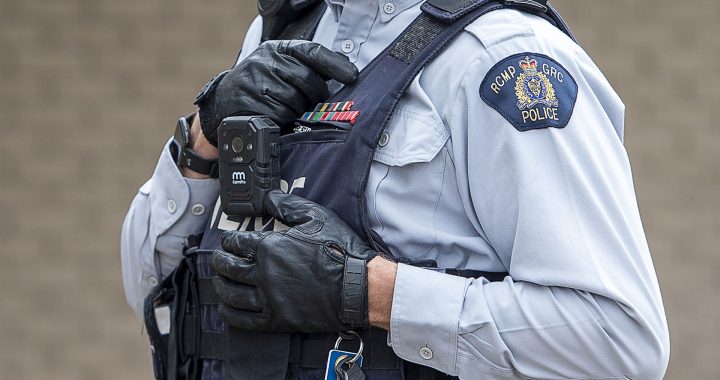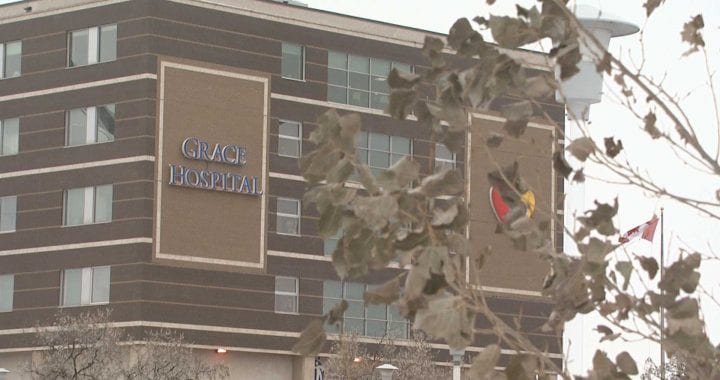Some environmental advocacy groups are speculating the company behind the Eagle Gold Mine – site of a cyanide spill in Yukon last month – may soon go bankrupt.
Mine owner Victoria Gold released a statement on July 12 indicating it is facing uncertainty regarding the future of the mine.
“There can be no assurance that the Company will receive authorizations necessary to restart production,” it said, “or that the Company will have the financial resources necessary to repair damage to equipment and facilities or remediate impacts caused by the incident or restart production.”
About 500 people work at Eagle, which is located in the Mayo mining district of central Yukon.

Mining Watch Canada, a non-governmental watchdog over the industry, says the company’s statement raises more questions than it answers.
“The more we learn about this, the sketchier it gets,” alleged Jamie Kneen, Mining Watch’s national program co-lead for western and northern Canada.
The company has said the mine’s heap leach pad, which processes ore and gold, experienced an equipment failure on June 24 that caused a landslide and subsequent cyanide contamination downstream of the site.
Kneen said most of the company’s money was “tied up” in the heap leach pad.
“The gold in that heap leach pile was what they were planning to use to pay their bills,” he told APTN News. “They don’t have the cash flow, they don’t have any other operations, they don’t have a lot of reserve.
“It wouldn’t be at all surprising if they go belly up as a result of this,” he suggested.
Meanwhile, the Yukon government holds a $104-million security from the company to cover the cost of clean up and reclamation in the event of something like this.
But Kneen is concerned it won’t be enough.
“Unfortunately, the record is that these cleanups cost a lot more than we thought,” he said. “Every time they go over budget.
“The risk is that it may end up costing hundreds of millions of dollars to clean it up. And that will come from the taxpayers. Maybe the territorial government will be able to get some support from the feds to pay for it.”

Randi Newton, conservation manager for the Yukon branch of the Canadian Parks and Wilderness Society, has similar concerns.
She said it’s not a matter of if the company goes bankrupt, but when.
“If you look at the company’s capital to debt, it doesn’t look like the company is really in control anymore,” she said in an interview. “It looks like its lenders own their control.
“It’s hard to imagine a world in which this company survives and can pay for remediation.”
Newton pointed out the company’s security is based on a closure plan – one that doesn’t include a heap leach failure and environmental contamination.
“(The plan) assumes that the heap leach is going to be there so that they can detoxify the cyanide; the heap leach is destroyed, the pumping system is destroyed. (The heap leach failure) makes cleanup a lot more complex and a lot more expensive.”
Newton said the incident should act as a wakeup call for the territorial government to implement better mining regulations.
“We could introduce a risk premium for those types of projects,” she added. “We could charge more for risky facilities like tailings facilities, either to make sure we have the money in case something like this happens or to discourage these types of projects from happening in the first place.”

Chief Dawna Hope of Na-Cho Nyäk Dun First Nation said she was disappointed by the company’s dire outlook.
The mine is located on her First Nation’s traditional territory.
“We were hoping to be able to work better collaboratively and not be surprised by announcements like that,” she noted.
She said the focus is now on worker safety and concerns that the facility’s events ponds are almost full. Events ponds are used to store contaminated or potentially contaminated water until it can be treated and released into the environment.
“Once they are full, they’re going to start overflowing,” Hope said. “That is the biggest concern to us. There’s impending disasters beyond the disaster that occurred June 24.”
Hope said she is calling on Yukon government to help with next steps. She said the First Nation has also started to engage with the federal government.
“From Day 1, we’ve asked Yukon government to step up. And we continue to do that,” she said.
Hope said the First Nation passed a resolution on July 14 declaring a state of climate and environmental emergency.
The declaration orders the First Nation to “act immediately” to create a disaster recovery plan, among other things.

In a statement to APTN, the territory’s Department of Energy, Mines and Resources had little to say about the company’s recent announcement.
“The company has provided $104 million in financial security owed for the site,” said spokesperson John Thompson. “We collect financial security from all major mines in order to pay for reclamation and closure in the event of an operator failing to complete this work.”
APTN reached out to Victoria Gold for comment but did not hear back by deadline.









